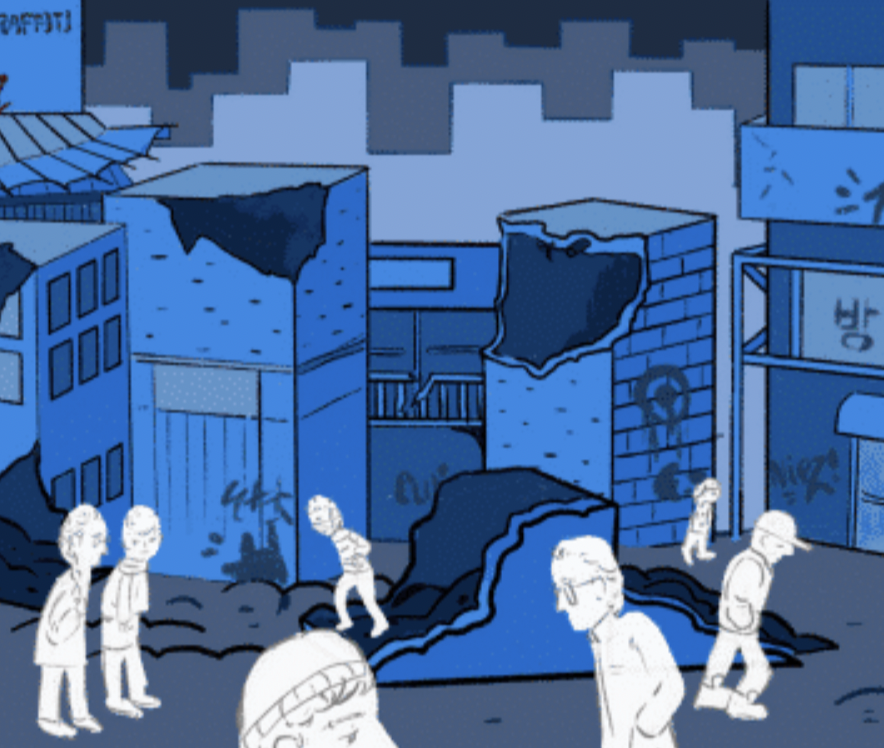
By Francesca Howard ’26
Recent initiatives of strict federal law enforcement and the expansion of homeless shelters in New York City have helped to reduce the number of misdemeanors and felonies. Still, the safety of residents in the Big Apple is not guaranteed. More specifically, current policies neglect NYC’s true adversary: its outdated infrastructure.
It’s undeniable that crime rates have diminished over the past few decades, such as the 184,652 major felonies in 2000, compared to 126,589 in 2022. In fact, Mayor Eric Adams declared New York City to be the “safest city in America,” citing significant reductions in crime rates.
Truthfully, the lack of safety in urban environments is likely linked to the deterioration of infrastructure and, conversely, the effects of gentrification.
At first glance, one might associate gentrification with improvements to infrastructure. It’s true that as the attraction of higher-income residents tends to bring along renovations to buildings, investments in public transit, and improvements in amenities. Yet, New York City is in a constant state of deterioration. As one of the world’s most prominent cities, there’s no opportunity for officials to carry out large operations to overhaul the outdated infrastructure. The omnipresent scaffolding and flooded subways contribute to this phenomenon.
Urban areas affected by decay are no pretty sight: inefficient land usage, dilapidated buildings, antiquated subway systems, and graffiti-laden walls. This blatant disregard for infrastructure upkeep is about more than appearance; it signals a lack of concern for the area’s welfare. It sends a message that further damage is inconsequential in an already deteriorating community. Neglected and poorly maintained areas also cause stress and anxiety among residents. Some may resort to crime to express their frustration or to earn enough to live somewhere nicer.
Meanwhile, clean and well-maintained environments promote adherence to societal norms and laws. Beautiful and functional public spaces encourage positive social interactions and community engagement. Residents who like their community will look out for one another and be less likely to harm that community.
So we know the problem, but how do we fix it? A better way to sustainably reduce crime and make residents feel safer is to prioritize inclusive and socially responsible city security developments.
Again, it all starts with infrastructure. There are numerous ways to end city crime by simply restructuring the city — improve security systems, clean up trash-ridden streets, ventilate buildings to prevent the stench of marijuana, repair the underground subways, and exterminate the abundant rat population.
Take the High Line Park, which was a former railway refurbished into a unique public park. The collaborative efforts of community activists Joshua David and Robert Hammond, as well as the landscape architecture firm James Corner Field Operations, garnered support for this project. The result was vivid greenery in the concrete jumble of Manhattan, all while preventing the demolition of a landmark in the city’s history.
To reduce crime, we must repair damaged infrastructure, remove debris, and improve street aesthetics and illumination. This simple yet effective strategy will transform urban areas into safer and more inviting spaces. In the long run, such improvements will help achieve broader urban renewal and revitalization goals. We need to blend these practical measures with strategies that address the intangible but very real fears and anxiety of those living in cities.
However, we must find ways to develop neighborhoods without gentrifying them and returning to square one. As cities evolve, the contrast in the quality of housing, education, and healthcare accentuates the divide between the rich and poor, fueling resentment among those who feel cheated by the system.
We mustn’t overlook the well-being of the residents themselves in the process. The only way to prevent crime more effectively while avoiding the further gentrification of urban areas is to involve residents in the decision-making. Community-led developments should meet the needs of existing residents, not marginalize them. Neighborhoods should feel safe and comfortable, but that must be achieved through dialogue, collaboration, and inclusivity to ensure those benefits apply to all.




